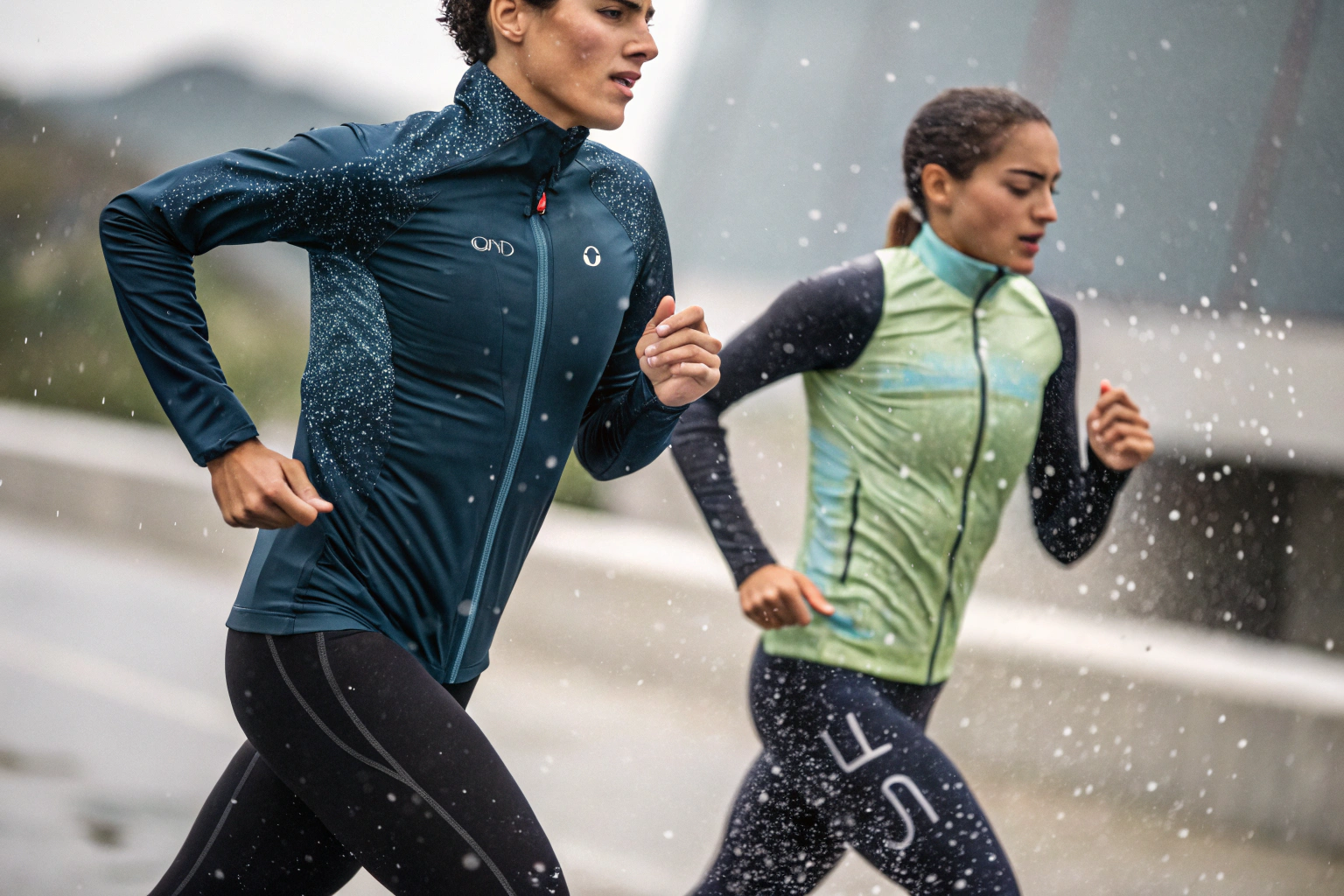Athletic wear is designed to do much more than look good—it must support comfort, performance, and durability. Many athletes and fitness enthusiasts face the same frustrations: clothing that traps sweat, restricts movement, or causes irritation during training. These problems lead to one essential question: which fabrics are best for athletic wear?
The most effective athletic fabrics are lightweight, moisture-wicking, breathable, and flexible. Synthetic options such as polyester, nylon, and spandex blends dominate high-performance sportswear, while natural fibers like merino wool and bamboo-based fabrics provide sustainable and breathable alternatives. By understanding the strengths of each, athletes and brands can make better fabric choices.
This article explores why fabric matters in sports, examines the leading synthetic and natural fibers, and explains how to match fabrics to different athletic activities.
Why Do Fabrics Matter in Athletic Wear?
During exercise, the human body generates both heat and sweat. If the fabric cannot release heat or manage sweat effectively, discomfort and reduced performance follow. This means fabric selection is not a matter of fashion alone but a direct factor in athletic success.
The right fabric keeps the body cool, dry, and unrestricted, while the wrong fabric leads to overheating, chafing, and poor durability.
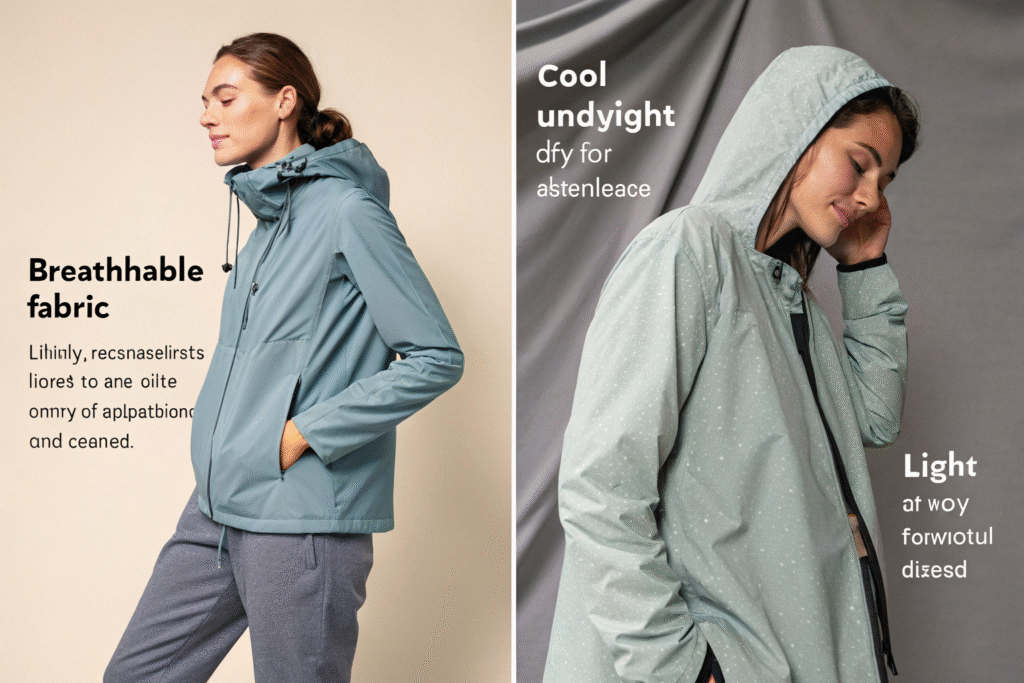
Key Performance Factors
- Moisture Management: Determines how quickly sweat is absorbed and evaporated.
- Breathability: Controls airflow and prevents overheating.
- Stretch and Recovery: Ensures freedom of movement without sagging.
- Durability: Withstands frequent washing and intense activity.
- Comfort: Reduces irritation and odor during extended wear.
When these factors align, athletes can train harder and recover faster, illustrating the direct cause-and-effect link between fabric choice and performance.
Which Synthetic Fabrics Perform Best?
Synthetic fibers dominate athletic wear because they can be engineered for very specific functions. Compared with natural fibers, they manage moisture more efficiently and resist wear, which explains their popularity in modern sportswear.
Polyester, nylon, and spandex are the leading synthetic fibers used in performance apparel.
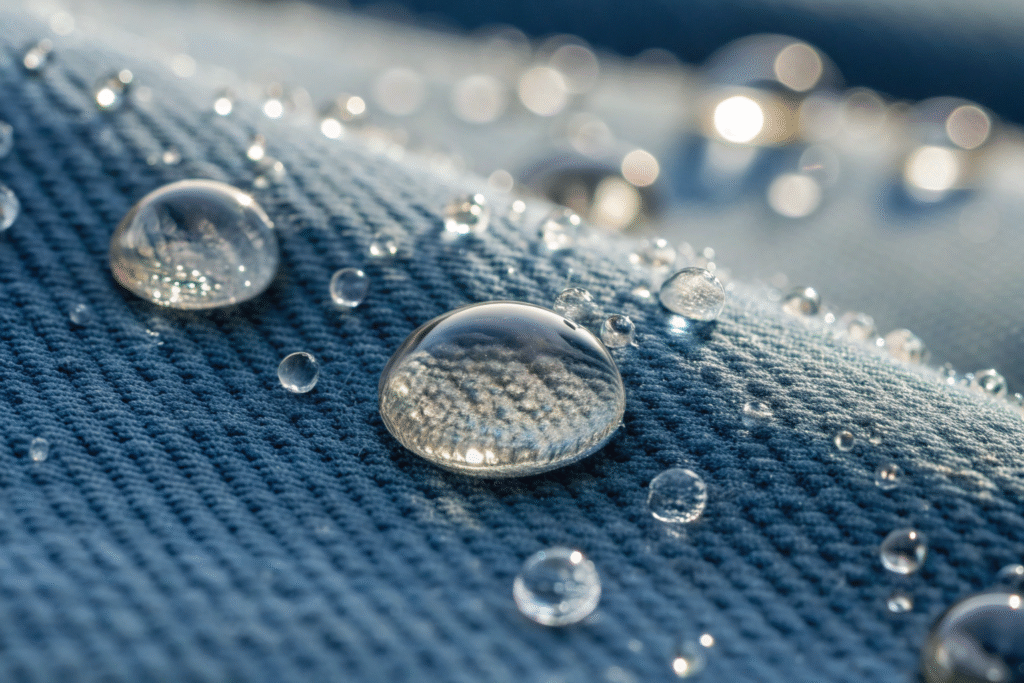
Polyester
- Moisture Control: Wicks sweat away and dries quickly.
- Durability: Strong, wrinkle-resistant, and colorfast.
- Best Use: Running shirts, training tops, and gym shorts.
Nylon
- Strength: Smooth, abrasion-resistant, and long-lasting.
- Flexibility: Offers more stretch than polyester.
- Best Use: Leggings, yoga wear, and compression garments.
Spandex (Elastane/Lycra)
- Stretch: Extends up to 500% and recovers fully.
- Role in Blends: Added to polyester or nylon for flexibility.
- Best Use: Compression wear, sports bras, and form-fitting athletic apparel.
For instance, Nike’s Dri-FIT technology uses polyester microfibers to wick sweat efficiently, demonstrating how engineered fabrics directly improve athletic performance (Nike).
Can Natural Fabrics Compete in Sportswear?
Although synthetics dominate, natural fibers still play an important role in performance wear. They offer unique benefits such as odor resistance, breathability, and sustainability. This makes them valuable alternatives, particularly in outdoor and endurance sports.
Merino wool and bamboo-based fabrics are the most effective natural fibers for athletic use.
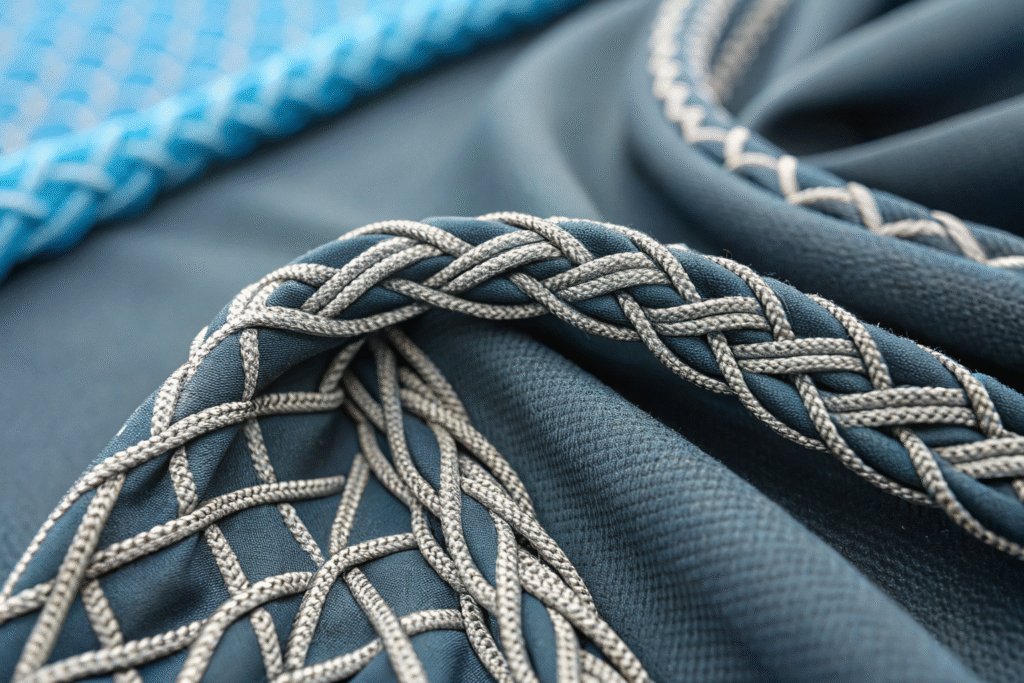
Merino Wool
- Temperature Regulation: Keeps the body warm in cold climates and cool in heat.
- Moisture Absorption: Wicks sweat naturally while remaining breathable.
- Odor Resistance: Antibacterial properties reduce odor during long wear.
- Best Use: Hiking base layers, running gear, and endurance sports.
Bamboo and Tencel™
- Eco-Friendly: Produced from renewable resources.
- Softness: Feels silky against the skin.
- Breathability: Wicks moisture moderately, suitable for low- to medium-intensity workouts.
- Best Use: Yoga clothing, athleisure, and light training gear.
According to Textile Exchange, regenerated cellulose fibers like Tencel™ are becoming increasingly popular in activewear because they combine sustainability with comfort.
How to Match Fabrics to Different Sports?
Not all sports demand the same fabric properties. High-intensity training requires maximum sweat control, while outdoor activities call for thermal balance. Recognizing these differences helps athletes and brands choose more effectively.
By matching fabric properties with activity needs, performance and comfort can both be maximized.
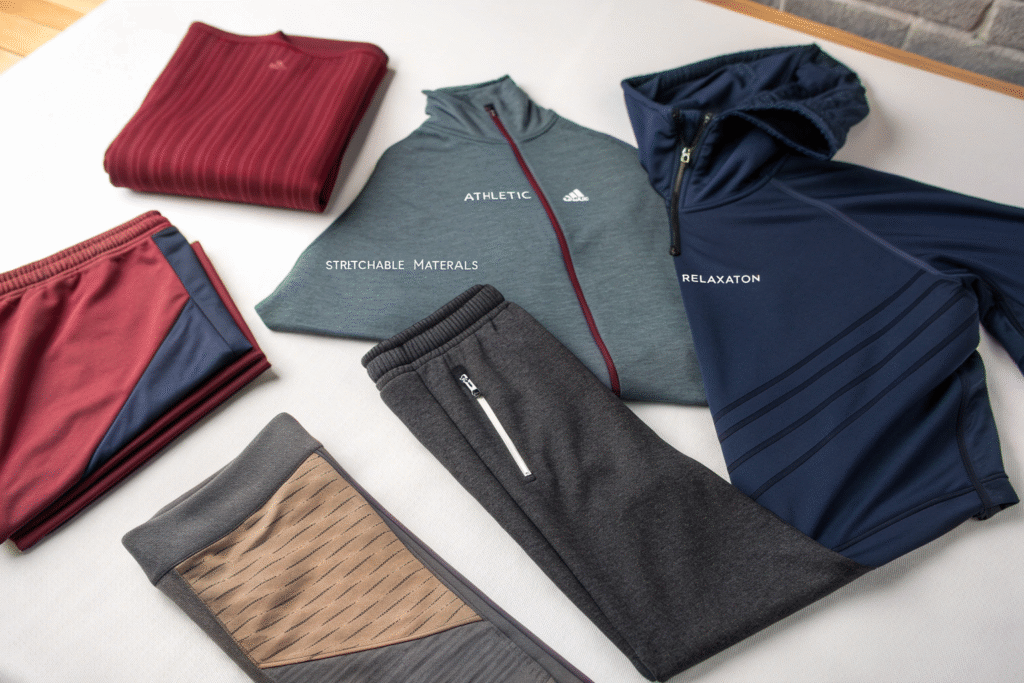
High-Intensity Training
- Best Fabrics: Polyester-spandex blends.
- Reason: Provide quick sweat evaporation and full flexibility.
- Examples: Running, HIIT workouts, and cycling.
Low-Impact Activities
- Best Fabrics: Nylon blends or bamboo-based textiles.
- Reason: Deliver comfort and stretch without overheating.
- Examples: Yoga, Pilates, and casual gym sessions.
Outdoor and Endurance Sports
- Best Fabrics: Merino wool or hybrid blends.
- Reason: Offer thermal regulation and odor resistance.
- Examples: Hiking, trekking, and long-distance running.
In this way, fabric choice directly affects athletic outcomes, linking material science to real-world performance.
Conclusion
The best fabric for athletic wear depends on balancing comfort, performance, and durability. Polyester and nylon blends with added spandex remain the most reliable choice for high-intensity sports because they wick sweat, stretch easily, and withstand frequent use. For outdoor or endurance activities, merino wool provides unmatched natural temperature regulation and odor control, while bamboo and Tencel™ offer eco-friendly options for light to moderate training.
For sportswear brands and buyers, fabric choice is a strategic decision. Selecting the right materials ensures both athlete satisfaction and product longevity. At Shanghai Fumao, we supply a wide range of athletic fabrics—from engineered polyester blends to sustainable natural fibers—tailored to performance needs. To explore custom solutions for your activewear line, contact our Business Director Elaine at elaine@fumaoclothing.com.

